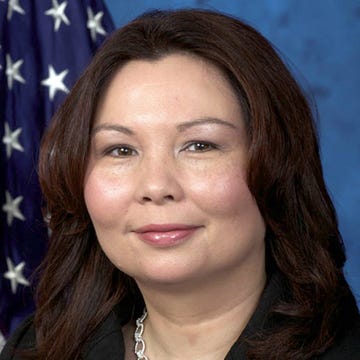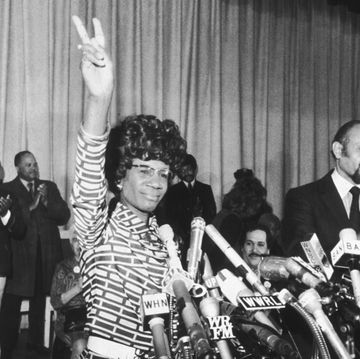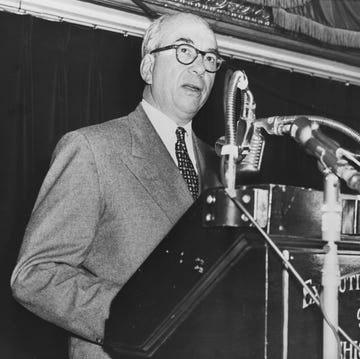The daughter of an Indian mother and a Jamaican father who moved to the United States to pursue their educational dreams, Kamala Harris’ story is the story of an increasingly multicultural America. Her trailblazing career, which saw her become the first woman, the first Black and the first South Asian America elected vice president, has its roots in the civil rights movement of the 1960s and 70s, and the family, friendships and communities that helped shape Harris’ life.
Harris’ parents traveled different, yet similar paths to the United States
Harris' parents, Donald Harris and Shyamala Gopalan, were both born in 1938. Donald was the son of Afro-Jamaican parents, and he attended local schools before graduating from the University of the West Indies. He secured a prestigious scholarship to pursue advanced studies in economics and shocked his family and educators when he opted not to follow the path of previous scholarship recipients, who had remained within the sphere of the British Empire by studying in Britain. Instead, Donald applied to the University of California at Berkeley, fueled by accounts of students from the university who had traveled to the Jim Crow South in the early days of the civil rights movement.
Shyamala was born in Madras, in what was then British India. Her senior civil servant father, P.V. Gopalan, was a member of the privileged, elite, ancient Tamil Brahmin caste, and her mother, Rajam, was a woman’s rights activist and proponent of increased access to birth control for Indian women. The Gopalans were progressive parents, instilling the importance of education for all their children.
But Shyamala bristled at the limited education that she, like most other Indian women of the time, received, and after graduating from a woman’s college in New Delhi, she secretly applied to Berkeley, despite the fact that her family had never visited the United States, let alone California. Her father was surprised but dug into his savings to fund her first year of school. She arrived on campus in 1958, two years before her future husband, to pursue her master’s degree in nutrition and endocrinology.
The pair met during an Afro-American Association meeting at Berkeley
Soon after her arrival, Shyamala befriended several Black students and joined an off-campus reading group studying the overlooked works of Black authors. Later known as the Afro-American Association, its members included influential activists in the emerging Black consciousness movement, who would go on to establish the field of Black studies as well as the Kwanzaa holiday. Black Power and Black nationalist leaders were also members, including Huey P. Newton, a co-founder of the Black Panther Party.
It was at a meeting in 1962 that she met Donald, and he was immediately taken with the petite (just 5-feet tall) yet confident Shyamala. The pair bonded over their shared left-wing politics and despite Shyamala’s original intention to return home to India after finishing school — and expectations that she would enter an arranged marriage — she and Donald married in 1963. Their first child, Kamala Devi, was born in Oakland in 1964, the same year Shyamala earned her PhD. Harris’ mother chose her name in tribute to her Indian heritage. Kamala means “lotus,” and is also another name for Lakshmi, a Hindu goddess. Daughter Maya followed two years later.
Harris would later recall in her autobiography and on the campaign trail that some of her first memories were of attending civil rights protests, giving her what she called a “stroller’s-eye” view of the movement. Her mother met Martin Luther King Jr. following a speech at Berkeley in 1967, and many of the Black student activists Donald and Shyamala befriended would play an influential role in Harris’ early years.
Harris’ parents’ divorce left deep scars
After obtaining his own PhD., Donald taught at universities in Illinois and Wisconsin, but strains were beginning to show on the couple’s marriage, and they divorced in 1971 when Harris was 7 years old. Although Harris would later say that she rarely heard her parents arguing about their collapsing marriage, they had become like “oil and water.” Donald noted his anger at the family court system during a custody battle that he believed limited his parental rights.
Despite settling nearby after becoming the first Black economics professor at Stanford University, Donald became less of a constant presence in his daughters' lives, and their time with him was largely relegated to weekends, summer visits and trips to visit family in Jamaica.
Shyamala made sure her daughters embraced their multi-cultural background
Following the divorce, Shyamala and her daughters moved into a top-floor apartment in Oakland. As a young researcher, Shyamala worked long hours, often bringing Harris and her sister to the lab, or to a daycare center on the first floor of their building run by Regina Shelton, who became a “second mother” to the girls. The walls of Shelton’s daycare were covered with images of influential African Americans, including Sojourner Truth and Harriet Tubman. When Harris was sworn in as California’s attorney general, she took the oath of office with her hand on Shelton’s Bible.
Shelton frequently took the girls to her Baptist church, and they also attended a Hindu temple with their mother. They lived in a predominantly Black neighborhood and regularly attended events at Rainbow Sign, a Black cultural center in Berkeley which attracted luminaries like Nina Simone and Maya Angelou. As Harris wrote in her autobiography, “My mother understood very well that she was raising two Black daughters, and she was determined to make sure we would grow into confident, proud Black women.” Harris was also part of one of the earliest school integration programs in the country, traveling by bus to attend Thousand Oaks Elementary School, located in a predominantly white and affluent section of Oakland.
There were also visits to India, and Harris remained very close to her maternal grandparents, especially her grandfather, whose career included postings in Africa, where he advised the governments of several post-colonial governments. His lifelong dedication to civil rights for all would leave a deep impression on both Harris children.
Harris spent several formative years in Canada
Despite the protective and supportive environment provided by friends in Oakland, Shyamala was disappointed at what she considered both sexist and racist attitudes that she believed had limited her scientific career. When Harris was 12, she moved the family to Montreal, accepting a researcher and teaching position at the Jewish General Hospital, where she would work for the next 16 years, making a number of breakthroughs in the early detection of breast cancer. She was remembered as a strict, but warm, parent, who even opened her home to a friend of Harris' who had suffered abuse at home.
Harris attended Westmount High School, one of the most ethnically diverse schools in Canada, and was a popular and well-liked student whose own multicultural background allowed her to slide easily among the school’s various ethnic groups. After graduating, Harris decided to attend Washington, D.C.’s Howard University, one of America’s most prestigious historically Black universities, before returning to California to study law.
Shyamala was one of her daughter’s biggest supporters until her death from colon cancer in 2009, and Harris has credited all of her success to her mother. When Harris announced her presidential campaign on Martin Luther King Jr. Day in 2019, she went back to where both her story and those of her immigrant parents began — Oakland, California.














